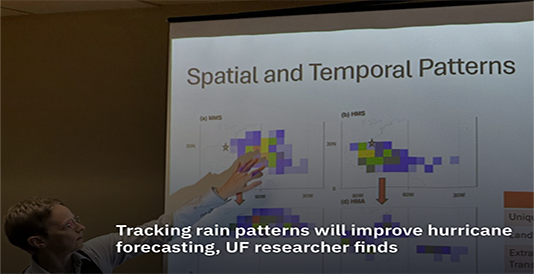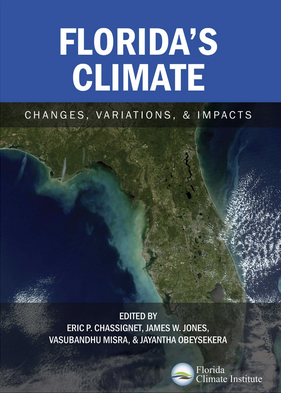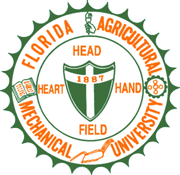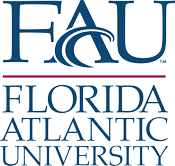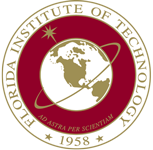Contact Person: Yin, Jianjun
Collaborators: J. Yin
Institutions: Florida State University
Funding Agency: DOE
Status: Funded
Filed Under: Climate Sciences
Abstract: The primary purposes of this proposal are; a) finalize the incorporation of HYCOM into CCSM, b) assess the impact of the isopycnic versus depth coordinates, and c) use the coupled CCSM/HYCOM as a powerful research tool for climate studies. In all activities, Drs. Chassignet and Yin will interact and coordinate with the National Center for Atmospheric Research (NCAR), Los Alamos National Laboratory (LANL), Naval Research Laboratory (NRL), CCSM and HYCOM communities which include the scientific users, the ocean and coupled climate model development teams and the project leaders.
Contact Person: Southworth, Jane
Collaborators: M.Binford, L. Cassidy, B.Child, E. Keys, G.Kiker, R.Munoz-Carpena, P.Waylen
Institutions: University of Florida
Funding Agency: NASA
Start: September 2009 End: September 2013
Status: Funded
Filed Under: Climate Sciences, Education, Land
Abstract: We ask "how does climate variability and climate change influence land use and land cover change as it works through socio-economic institutions?" To answer this question, the proposed project develops a temporally and spatially multiscale understanding of the relationships between land-cover and land-use change (LCLUC) and climatic shifts in three watersheds that lie in four southern African nations. We hypothesize that socio-economic institutions are the main instruments of human adaptation to climate variability and change, and that the observable outcomes of institutional adaptations are seen in the spatial and material expression of LCLUC. This study will test the resilience of the socio-ecological systems of southern Africa, enhance the use of remote sensing, and provide models for climate scenario planning. Specific research activities will develop relationships between climate data (station data), Tropical Rainfall Monitoring Mission (TRMM) data (1999 onwards, spatially interpolated station data and satellite data combined) and surface vegetation properties in terms of land cover changes (with the Moderate Resolution Imaging Spectroradiometer (MODIS)). Describing and explaining natural climate variability enables us to match this variability with social processes, livelihoods and economics and link these to past changes in LCLUC and climate. Future regional climate scenarios will be incorporated based on the IPCC and implications for both the social and ecological systems will be tested using both the SAVANNA model (Coughenour, 1992; Boone et al., 2002) and the QnD modeling system (Kiker et al., 2006).
Contact Person: Prizzia, Anna
Collaborators: A. Prizzia
Institutions: University of Florida
Funding Agency: various
Status: Funded
Filed Under: Climate Sciences, Extension, Land
Contact Person: Putz, Francis
Collaborators: G.Barnes, F. Putz, C. Romero
Institutions: University of Florida
Funding Agency: HED US AID
Status: Funded
Filed Under: Climate Sciences, Land, Extension, Water
Contact Person: Misra, Vasubandhu
Collaborators: Misra, V.
Institutions: Florida State University
Funding Agency: NOAA
Status: Funded
Filed Under: Climate Sciences, Water
Abstract: In this proposal we are proposing to produce experimental high-resolution retrospective regional climate forecasts for the North American Monsoon (NAM) and the South American Monsoon (SAM) by nesting the regional spectral model (RSM) into the climate forecast system (CFS) of the National Center for Environmental Prediction (NCEP). This project is unique for the following reasons: 1. It is adopting new nesting strategies of anomaly nesting (AN) and scale selective bias correction that have shown to enhance the skill of the seasonal climate integrations from the RSM. The proposed novel downscaling techniques shall be leveraging from the huge suite of existing CFS hindcasts. 2. The nesting of the RSM is being done in a global dynamical-coupled prediction system of the NCEP CFS. 3. It is expanding the scope of the NCEP CFS to hydrologic prediction of streamflow and river discharge of some major river basins in NAM and SAM from the implementation of an off line river routing scheme. 4. A single regional domain that includes both NAM and SAM will be used to enable the study of the dry and wet monsoons. It is proposed to conduct 10 years of Boreal summer (Jun-Jul-Aug) and winter (Jan-Feb-Mar) seasonal integrations with the RSM at 60km horizontal resolution nested into each of the 15 ensemble members of the CFS. The scientific questions to be pursued in this project from these model integrations are as follows:
- How do the proposed global and regional model prediction experiments reproduce the observed summer precipitation and surface temperature over the American Monsoon regions?
- How is the predictability over the American Monsoon regions associated with the leading patterns of climate variability? How much of the predictability of the resulting seasonal precipitation anomalies can be downscaled to local precipitation variability?
- What is the relative influence of the intraseasonal variability and ENSO over the monsoon regions? How does the regional model simulate the interactions between the local processes and regional and larger scale variability?
- Can useful probabilistic predictions be made of seasonal, intraseasonal variability of precipitation, river discharge (over major river basins such as the Amazon, La Plata, Rio Grande, Colorado river basins)?
- What is the role of the bias in SST predictions from CFS on the downscaled seasonal climate predictions of SAM and NAM?
- How is predictability of precipitation, base flow and surface runoff related to streamflow predictability? (Inter-river basin comparisons will also be part of this study).
Opportunities
Funding
- Resilience: Vulnerability and resilience management for socio-environmental systems in exposed territories | October 17, 2025 (Pre-Proposals)
- NSF Atmosphere Cluster (AGS-AC) | ongoing
- NSF Geospace Cluster (AGS-GC) | ongoing
- Duke Energy Foundation | Ongoing

